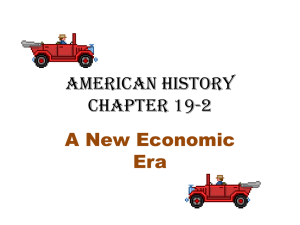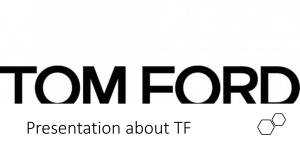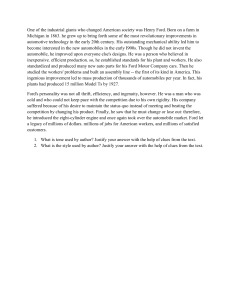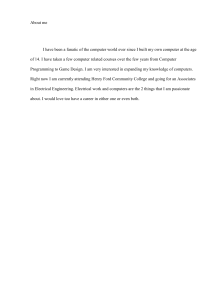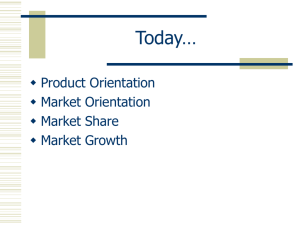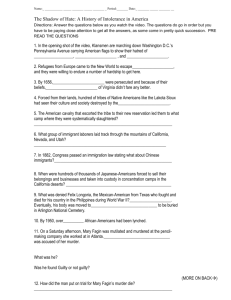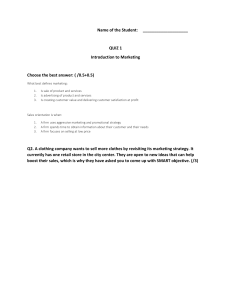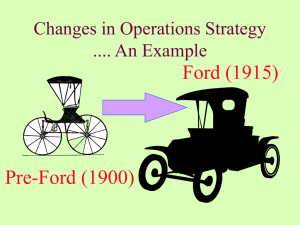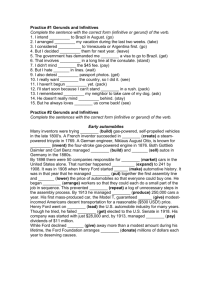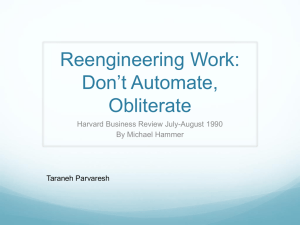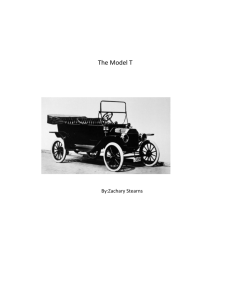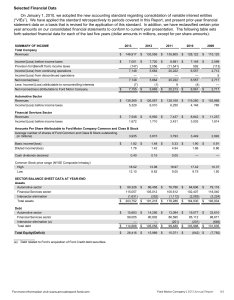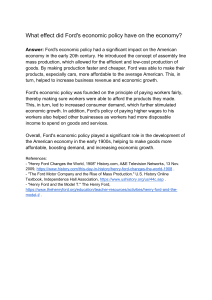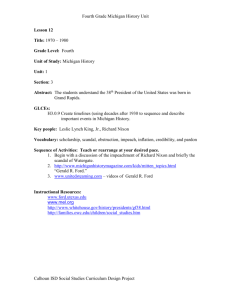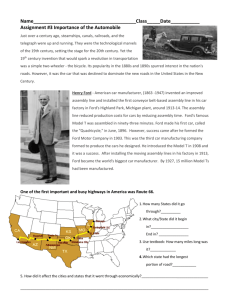Chapter 14 Section 1 Boom Times
advertisement
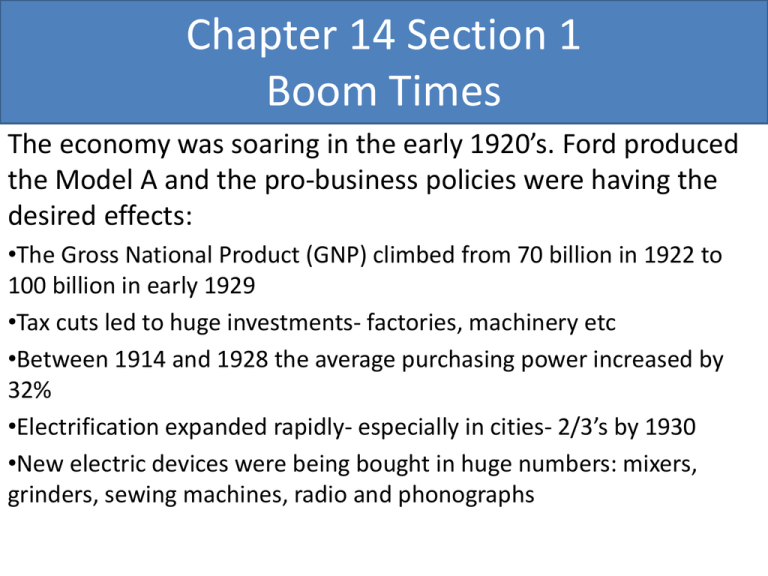
Chapter 14 Section 1 Boom Times The economy was soaring in the early 1920’s. Ford produced the Model A and the pro-business policies were having the desired effects: •The Gross National Product (GNP) climbed from 70 billion in 1922 to 100 billion in early 1929 •Tax cuts led to huge investments- factories, machinery etc •Between 1914 and 1928 the average purchasing power increased by 32% •Electrification expanded rapidly- especially in cities- 2/3’s by 1930 •New electric devices were being bought in huge numbers: mixers, grinders, sewing machines, radio and phonographs Mass Production Businesses continued to find ways to mass produce. This supplied more goods at a cheaper price. • Scientific Management- Also known as time and motion studies. One of the key developers was Frederick W. Taylor who believed that every job could be broken down into a series of smaller tasks • Henry Ford- Adopting SM with the assembly line he continued to increase production and lower the cost of his Model T (Tin Lizzie)- a very sturdy car introduced in 1914. • In the 1920’s the automobile industry was the largest in the nation Changes in Work The use of assembly lines and SM greatly increase productivity • Factory work was very repetitive and their was a high rate of turnover • Unskilled workers had very little chance of promotion • Increase need for upper level positions- clerical, managers and sales people • Discrimination shut out many African Americans • Ford: doubled pay and shortened hours, also tried to regulate the morality and personal behavior of his workers • He instructed workers to move out of ethnic neighborhoods and had a required Ford English School The Impact of New Products • Some jobs were eliminated- an example is domestic servants: why/how? • Laundry • Vacuuming • Errands- car A Land of Automobiles • By 1930 autos had almost replaced horse-drawn vehicles • Massive road building • Billboards and related services- drive- ins, motels, filling stations • Depopulation of the inner-cities • City and rural residents could visit each other • Auto-Touring- people camped, sightseeing with no restrictions • Family Life: autos had a huge impact, unsupervised dating, less church attendance, youth freedom • Critics: reduced the sense of community, family togetherness, pollution, traffic jams, parking and accidents $ Creating Consumers $ Alfred P. Sloan- GM head who designed more expensive carsluxury, power, style to tap into a new market Sloan also offered an Installment Plan, buy now- pay later for the new expensive cars. This philosophy spread to just about everything Planned Obsolescence: Started by GM but used by many- the idea is that you design products to become out of date and resell them new and improved designs- trade-ins for “old” models, clothes styles Advertising: Became a huge industry and primarily targeted women. Jingles, slogans, trademarks Chain-style groceries began because people could get more variety- replaced the mom and pop stores

